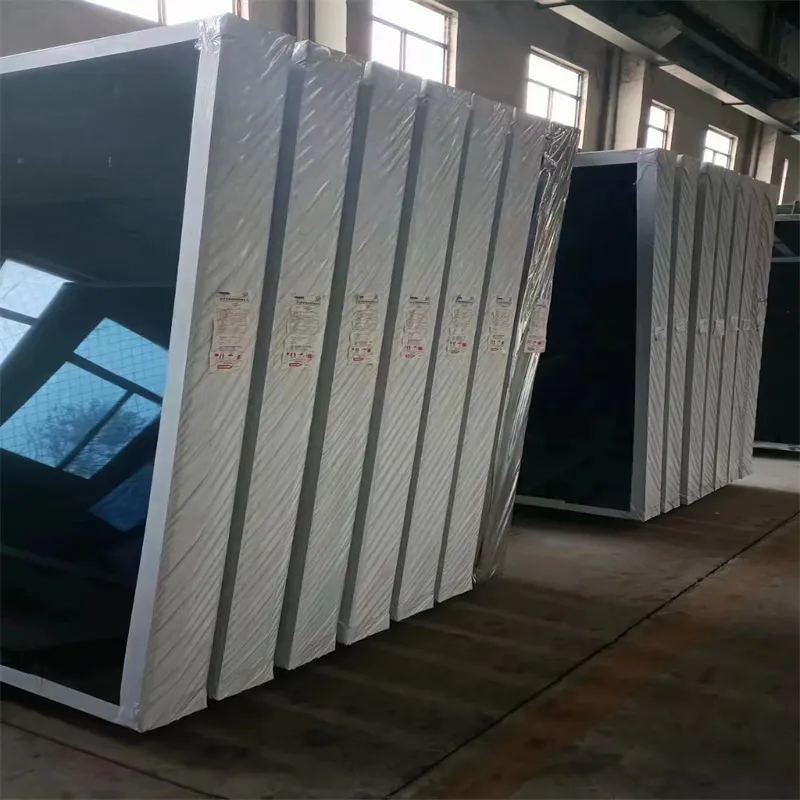Dec . 04, 2024 16:16 Back to list
Exploring the Economic Impact of Float Glass Manufacturing and Its Costs
Understanding the Cost of Float Glass An In-Depth Analysis
Float glass is an essential material widely used in construction, automotive, and various other industries. Its manufacturing process, properties, and applications make it a favored choice across the globe. However, understanding the cost associated with float glass is crucial for manufacturers, builders, and consumers alike. This article will delve into the various factors influencing the cost of float glass, its market trends, and its implications.
The Manufacturing Process
Float glass is produced using the float glass process, where molten glass is floated on top of molten tin. This method yields a uniform thickness and smooth surface, making it ideal for a range of applications. However, the production involves substantial energy consumption and raw material costs. The primary raw materials used in float glass production include silica sand, soda ash, and limestone. Prices of these materials can fluctuate based on economic conditions, affecting the overall cost of float glass.
Raw Material Costs
The cost of raw materials is one of the most significant factors in determining the cost of float glass. For instance, the price of silica sand can vary considerably due to mining regulations, geographic availability, and demand. Additionally, soda ash and limestone prices can be affected by similar market dynamics. Producers must be aware of these fluctuations as they directly influence production expenses.
Energy Consumption
Energy costs represent another major component of the pricing structure of float glass. The production process is energy-intensive, requiring high temperatures to melt the raw materials. Thus, any changes in energy prices—whether due to shifts in oil prices, natural gas costs, or electricity rates—can result in increased manufacturing expenses. Consequently, manufacturers are increasingly looking for ways to enhance energy efficiency and reduce their carbon footprint, which may involve initial investments that could later lead to cost savings.
cost of float glass

Transportation and Logistics
The geographic location of float glass manufacturers and their proximity to major markets also play a crucial role in determining costs. The expense associated with transporting raw materials to production facilities and finished products to consumers can impact pricing. Fluctuations in fuel prices and transportation availability can further exacerbate these costs. Manufacturers who can optimize their logistics may find themselves in a better position to offer competitive pricing.
Market Demand and Supply Dynamics
Like any commodity, the cost of float glass is heavily influenced by the supply and demand dynamics of the market. An increase in construction and manufacturing activities typically drives up demand for float glass, leading to higher prices. Conversely, during economic downturns, the demand may decrease, potentially resulting in lower prices. Market trends, such as increased investment in renewable energy or the rise of smart glass technologies, can also affect the demand for traditional float glass, impacting its cost.
Technological Advancements
Innovations in manufacturing processes can lead to significant cost savings in the production of float glass. For example, the introduction of automated systems may increase efficiency and reduce labor costs. Additionally, advancements in recycling technologies enable the use of cullet (recycled glass) in the production process, which can lower raw material costs and reduce energy consumption. Manufacturers adopting these technologies may be able to lower their overall costs, thereby offering more competitive prices.
Conclusion
In summary, the cost of float glass is influenced by a multitude of factors, including raw material prices, energy consumption, transportation logistics, market demand, and advancements in technology. For manufacturers and consumers, being aware of these elements is essential for making informed purchasing decisions. As the market for float glass continues to evolve, stakeholders must remain agile and responsive to changes in the production landscape. Understanding the economic variables at play will not only help in evaluating the cost but also in leveraging opportunities within this vital sector of the economy.
-
Safety and Style with Premium Laminated Glass Solutions
NewsJun.24,2025
-
Reinvents Security with Premium Wired Glass
NewsJun.24,2025
-
Premium Float Glass Line for Modern Architecture
NewsJun.24,2025
-
Low Emissivity Glass for Energy-Efficient Architecture
NewsJun.24,2025
-
High-Performance Insulated Glass Solutions for Modern Architecture
NewsJun.24,2025
-
Elevates Interior Style with Premium Silver Mirror
NewsJun.24,2025
Related PRODUCTS














